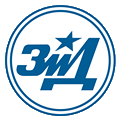Worldwide Heat Exchanger Industry to 2026 - by Type, Material, End-use Industry and Region - ResearchAndMarkets.com
The "Heat Exchanger Market: Global Industry Trends, Share, Size, Growth, Opportunity and Forecast 2021-2026" report has been added to ResearchAndMarkets.com's offering.
The global heat exchanger market reached a value of US$ 14.9 Billion in 2020. Looking forward, the publisher expects the global heat exchanger market to exhibit moderate growth during the next five years.
A heat exchanger refers to a device that is used for transferring heat from one fluid to another. It is used for controlling the temperature of a system or substance. It contains streams of hot and cold fluids, which are utilized to transfer thermal energy among the streams. They may be separated by a thermally conductive tube or plate or kept in direct contact if the fluids are immiscible. These devices assist in heating or cooling buildings as well as enable efficient functioning of engines and machines. As a result, they are widely utilized in boilers, furnaces, refrigerators, automotive radiators, sewage treatment and air conditioning systems.
The significantly rising demand for heat, ventilation and air-conditioning (HVAC) from industrial, commercial and residential sectors is primarily driving the growth of the market. This can be accredited to the inflating disposable income levels, changing living standards and extreme average climatic conditions across the globe. Moreover, rising environmental concerns amongst individuals regarding the use of energy-efficient and environment-friendly devices are also influencing the market growth. Governments of several countries have implemented stringent regulations to reduce carbon emissions across various industries, which are creating a positive outlook for the heat exchanger market.
Furthermore, manufacturers are constantly engaging in research and development (R&D) activities in the heat exchange technology to launch cost-effective and efficient product variants, which is expected to drive the market growth further.
Companies Mentioned
- Alfa Laval
- API Heat Transfer Inc.
- Danfoss
- General Electric Company
- Hisaka Works
- IHI Corporation
- Johnson Controls
- Kelvion Holding GmbH
- Koch Industries
- Lytron Inc.
- Mersen
- Modine Manufacturing
- Royal Hydraulics
- Sondex A/S
- Xylem Inc.
Key Questions Answered in This Report:
1. What was the global heat exchanger market size in 2020?
2. What is the impact of COVID-19 on the global heat exchanger market?
3. What will be the heat exchanger market outlook during the forecast period (2021-2026)?
4. What are the global heat exchanger market drivers?
5. What are the major trends in the global heat exchanger market?
6. What is the global heat exchanger market breakup by type?
7. What is the global heat exchanger market breakup by material?
8. What is the global heat exchanger market breakup by end use industry?
9. What are the major regions in the global heat exchanger market?
Key Topics Covered:
1 Preface
2 Scope and Methodology
2.1 Objectives of the Study
2.2 Stakeholders
2.3 Data Sources
2.3.1 Primary Sources
2.3.2 Secondary Sources
2.4 Market Estimation
2.4.1 Bottom-Up Approach
2.4.2 Top-Down Approach
2.5 Forecasting Methodology
3 Executive Summary
4 Introduction
4.1 Overview
4.2 Key Industry Trends
5 Global Heat Exchanger Market
5.1 Market Overview
5.2 Market Performance
5.3 Impact of COVID-19
5.4 Market Forecast
6 Market Breakup by Type
6.1 Shell & Tube
6.1.1 Market Trends
6.1.2 Market Forecast
6.2 Plate & Frame
6.2.1 Market Trends
6.2.2 Market Forecast
6.3 Air Cooled
6.3.1 Market Trends
6.3.2 Market Forecast
6.4 Others
6.4.1 Market Trends
6.4.2 Market Forecast
7 Market Breakup by Material
7.1 Carbon Steel
7.1.1 Market Trends
7.1.2 Market Forecast
7.2 Stainless Steel
7.2.1 Market Trends
7.2.2 Market Forecast
7.3 Nickel
7.3.1 Market Trends
7.3.2 Market Forecast
7.4 Others
7.4.1 Market Trends
7.4.2 Market Forecast
8 Market Breakup by End-Use Industry
8.1 Chemical
8.1.1 Market Trends
8.1.2 Market Forecast
8.2 Petrochemical and Oil & Gas
8.2.1 Market Trends
8.2.2 Market Forecast
8.3 HVAC and Refrigeration
8.3.1 Market Trends
8.3.2 Market Forecast
8.4 Food & Beverage
8.4.1 Market Trends
8.4.2 Market Forecast
8.5 Power Generation
8.5.1 Market Trends
8.5.2 Market Forecast
8.6 Paper & Pulp
8.6.1 Market Trends
8.6.2 Market Forecast
8.7 Others
8.7.1 Market Trends
8.7.2 Market Forecast
9 Market Breakup by Region
9.1 North America
9.2 Europe
9.3 Asia Pacific
9.4 Latin America
9.5 Middle East and Africa
10 SWOT Analysis
10.1 Overview
10.2 Strengths
10.3 Weaknesses
10.4 Opportunities
10.5 Threats
11 Value Chain Analysis
12 Porters Five Forces Analysis
12.1 Overview
12.2 Bargaining Power of Buyers
12.3 Bargaining Power of Suppliers
12.4 Degree of Competition
12.5 Threat of New Entrants
12.6 Threat of Substitutes
13 Price Indicators
14 Competitive Landscape
14.1 Market Structure
14.2 Key Players
14.3 Profiles of Key Players
For more information about this report visit https://www.researchandmarkets.com/r/xn23a9
View source version on businesswire.com: https://www.businesswire.com/news/home/20210428005782/en/




